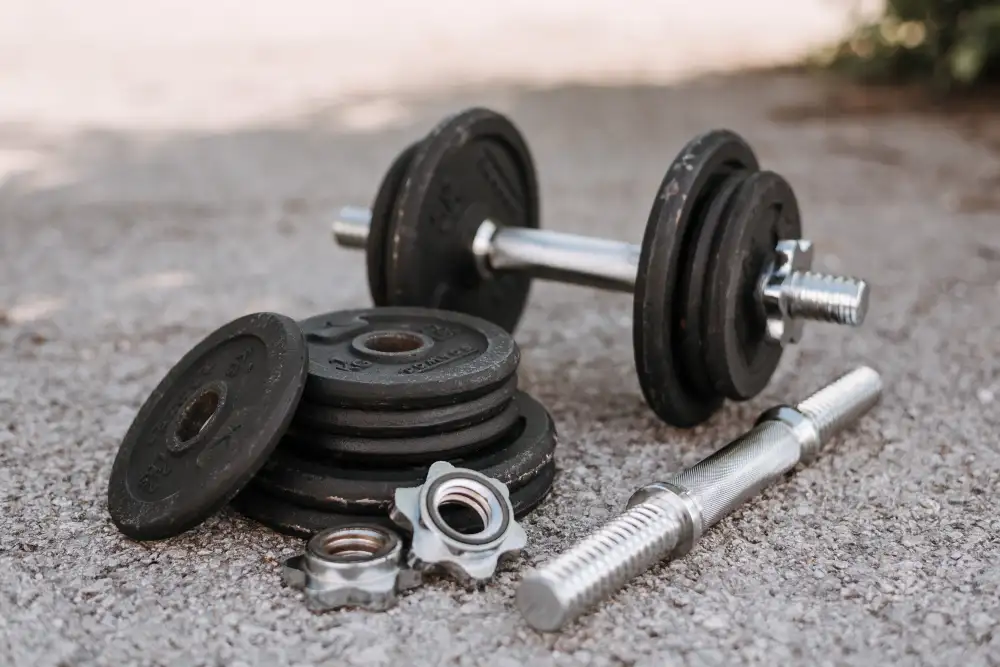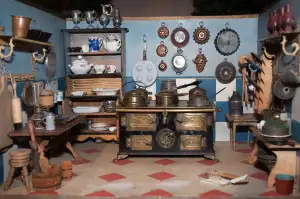Mastering the Art of Cleaning a Cast Iron Skillet: Essential Tips for a Pristine Home Kitchen

- Importance of proper cleaning for maintaining the skillet's seasoning
- Gathering the necessary cleaning supplies
- Step-by-step instructions for cleaning the cast iron skillet
- Preparing the skillet for cleaning
- Removing food residue and stuck-on particles
- Avoiding harsh cleaning agents and abrasive tools
- Drying the skillet thoroughly
- Tips for maintaining the skillet's seasoning after cleaning
Cleaning a cast iron skillet may seem like a daunting task, but with the right techniques and a little bit of love, it can be easily mastered. A well-seasoned cast iron skillet is a prized possession in any kitchen, and proper cleaning is essential for maintaining its seasoning and ensuring its longevity. In this article, we will guide you through the step-by-step process of cleaning your cast iron skillet, using gentle methods that preserve its natural non-stick surface. So roll up your sleeves and get ready to learn the art of cleaning a cast iron skillet!
Importance of proper cleaning for maintaining the skillet's seasoning
Proper cleaning is essential for maintaining the seasoning of a cast iron skillet. The seasoning is the layer of oil that has been baked onto the skillet, creating a natural non-stick surface. It not only prevents food from sticking but also adds flavor to your dishes. By cleaning the skillet correctly, you can preserve this valuable seasoning and ensure its longevity. Neglecting proper cleaning can lead to rusting, loss of seasoning, and ultimately a diminished cooking experience. So, let's dive into the necessary steps and tips to keep your cast iron skillet in pristine condition!
Gathering the necessary cleaning supplies
To properly clean a cast iron skillet, it is essential to gather the necessary cleaning supplies. These items will help ensure that your skillet is thoroughly cleaned without damaging its seasoning. Firstly, you will need a stiff brush or sponge specifically designed for cast iron. This will help remove any food residue or stuck-on particles. Additionally, you will need mild dish soap, preferably one that is gentle and free of harsh chemicals. A non-abrasive scrubber or cloth should also be included in your cleaning arsenal to avoid scratching the surface of the skillet. Lastly, make sure to have a clean towel or paper towels on hand for drying the skillet after cleaning. By having these supplies ready, you can tackle the task of cleaning your cast iron skillet with ease and efficiency.
Step-by-step instructions for cleaning the cast iron skillet
Step 4: Step-by-step instructions for cleaning the cast iron skillet
a. Preparing the skillet for cleaning: Start by allowing the skillet to cool down completely after use. Never clean a hot skillet as it can warp or crack.
b. Removing food residue and stuck-on particles: Gently scrape off any food residue using a wooden spatula or a non-abrasive brush. For stubborn bits, add a small amount of coarse salt and scrub gently.
c. Avoiding harsh cleaning agents and abrasive tools: Never use soap or harsh chemicals on your cast iron skillet as they can strip away the seasoning. Instead, opt for hot water and a soft sponge to clean the surface.
d. Drying the skillet thoroughly: After rinsing, dry the skillet thoroughly with a clean towel or by placing it over low heat on the stovetop until all moisture evaporates. This prevents rust from forming.
Remember, proper cleaning is essential for maintaining your cast iron skillet's seasoning and ensuring its longevity in your kitchen!
Preparing the skillet for cleaning
Before diving into the cleaning process, it's important to properly prepare your cast iron skillet. Start by allowing the skillet to cool down completely after use. Handling a hot skillet can lead to accidents and burns, so exercise caution.
Once cooled, gently scrape off any excess food or residue using a wooden spatula or a stiff brush. Be careful not to scratch the surface of the skillet while doing this. If there are stubborn bits stuck on, you can pour some warm water into the skillet and let it soak for a few minutes to loosen them up.
Next, rinse the skillet with warm water to remove any remaining debris. Avoid using soap at this stage as it can strip away the seasoning that gives your cast iron its non-stick properties and unique flavor.
After rinsing, inspect the skillet for any lingering particles or grease. If necessary, repeat the scraping and rinsing steps until the skillet is free from food remnants.
With these preliminary steps completed, you're now ready to move on to the actual cleaning process. Remember, taking care of your cast iron skillet is an act of love that will ensure its longevity and enhance your cooking experience.
Removing food residue and stuck-on particles
To remove food residue and stuck-on particles from your cast iron skillet, start by using a stiff brush or scraper to gently scrape away any large pieces of food. Be careful not to use anything too abrasive that could damage the seasoning.
Next, fill the skillet with warm water and add a small amount of mild dish soap. Using a non-abrasive sponge or cloth, scrub the surface of the skillet, paying special attention to areas with stubborn residue.
If there are still some stubborn bits that won't come off, you can create a paste using coarse salt and water. Apply the paste to the affected areas and scrub gently until the residue loosens.
Once all the food residue is removed, rinse the skillet thoroughly with warm water to ensure all soap and salt are washed away. Avoid leaving any soap residue as it can affect the taste of your future dishes.
Remember never to soak your cast iron skillet for an extended period or put it in the dishwasher as this can lead to rusting. Instead, clean it promptly after each use to maintain its pristine condition.
By following these steps, you'll be able to remove food residue and stuck-on particles from your cast iron skillet effectively while preserving its seasoning for many delicious meals to come.
Avoiding harsh cleaning agents and abrasive tools
When it comes to cleaning a cast iron skillet, it's important to avoid using harsh cleaning agents and abrasive tools. These can strip away the skillet's seasoning, which is crucial for its non-stick properties and overall performance. Instead, opt for gentle cleaning methods that preserve the skillet's natural patina. Avoid using dish soap or heavy-duty cleaners, as they can remove the seasoning. Similarly, steer clear of abrasive scrub brushes or steel wool, as they can scratch the surface of the skillet. Stick to using a soft sponge or cloth and hot water to gently remove any food residue. By avoiding harsh cleaning agents and abrasive tools, you'll ensure that your cast iron skillet remains in pristine condition for years to come.
Drying the skillet thoroughly
After cleaning the cast iron skillet, it is crucial to dry it thoroughly to prevent rusting. Start by using a clean, dry cloth or paper towel to remove any excess moisture. Next, place the skillet on a stovetop burner set to low heat for a few minutes. This will help evaporate any remaining water and ensure that the skillet is completely dry. Alternatively, you can also place the skillet in an oven set to a low temperature for about 10-15 minutes. Once the skillet is dry, allow it to cool before storing it away. Remember, proper drying is essential for maintaining the integrity of your cast iron skillet and ensuring its longevity in your kitchen.
Tips for maintaining the skillet's seasoning after cleaning
To maintain the seasoning of your cast iron skillet after cleaning, there are a few important tips to keep in mind. Firstly, avoid using soap or harsh detergents when cleaning your skillet as they can strip away the seasoning. Instead, use hot water and a stiff brush to remove any remaining food particles.
After washing, it's crucial to dry the skillet thoroughly to prevent rusting. Place it on a low heat burner for a few minutes until all moisture evaporates. Then, apply a thin layer of oil or fat to the entire surface of the skillet while it's still warm. This will help replenish the seasoning and protect the skillet from future rusting.
Another tip is to store your cast iron skillet in a dry place with good air circulation. Avoid stacking other cookware on top of it as this can cause scratches and damage to the seasoning. If you notice any signs of rust or loss of seasoning, simply repeat the cleaning and seasoning process outlined earlier.
Remember, maintaining the seasoning of your cast iron skillet requires love and care. With proper cleaning and regular maintenance, your skillet will continue to provide delicious meals for years to come.
In conclusion, mastering the art of cleaning a cast iron skillet requires love and care. This essential kitchen tool deserves our attention and respect, as it provides us with delicious meals and memories. By following the proper cleaning techniques outlined in this article, we can maintain the skillet's seasoning and ensure its longevity. So, let us approach the task of cleaning our cast iron skillets with passion and dedication, knowing that each pristine skillet is a testament to our love for food.
Published: 02. 02. 2024
Category: Home



